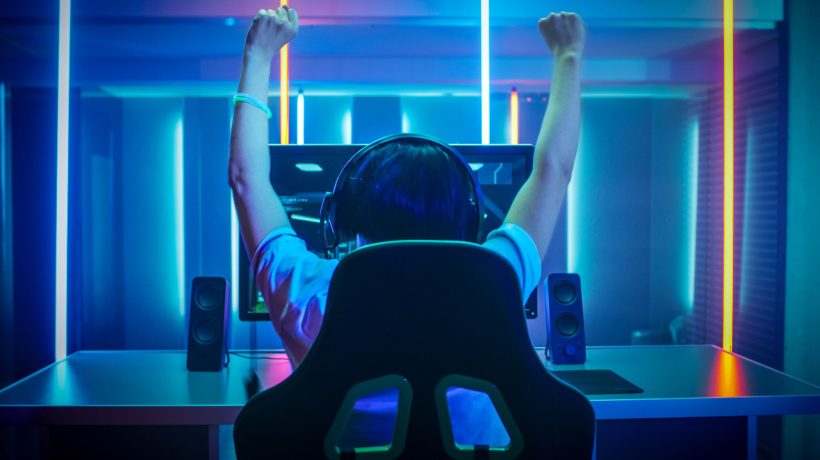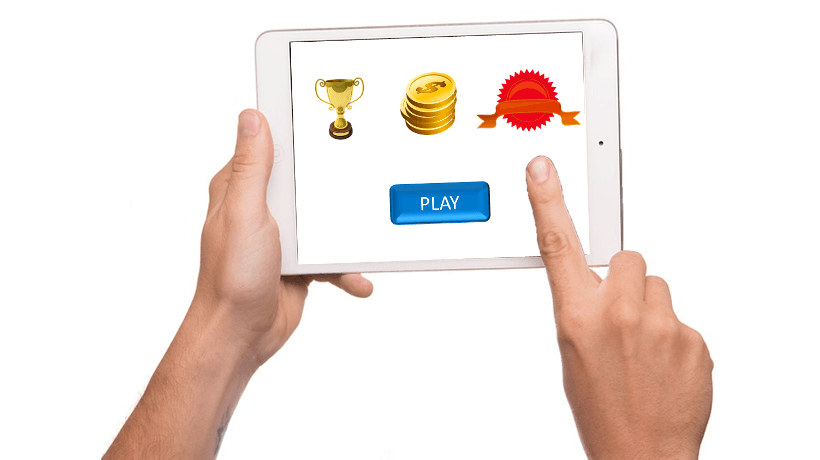Gamification: One Tool In Your ID Toolbox
With the growing popularity of gamification, many Instructional Designers just add points or badges to their courses with the hope of motivating their learners. Unfortunately, you can actually disengage learners because they can’t relate the purpose of the game to a desired outcome. The key to making rewards, points, and other game mechanics effective is to use them to motivate and encourage a specific behavior. They must be used for a purpose and not simply because they are fun.
What Is Gamification?
Before delving into the methodology of developing effective learning games, you need to know what gamification is, and just as importantly, what it is not.
Gamification Motivates Learners Toward Desired Behaviors
Gamification does more than add game elements to training, it intrinsically motivates learners to perform desired behaviors and complete required tasks. When training and game elements are appropriately designed and implemented, learners know what is expected of them and perform their jobs better.
Gamification Helps Learning Stick
Well-designed games help learners recall and apply knowledge, skills, or behaviors. This is done through engaging and relevant activities, feedback, and stories. By taking learners on a journey of activities and stories, they experience the content; they can put it into context. Experience, relevance, and repetition move the training from short-term to long-term memory.
Gamification Isn’t The End-All, And It Should Not Be The Primary Focus
Gamification is not the end-all solution to engaging training. It is only one tool in your Instructional Design toolbox, and it should be used only when appropriate. For training to be effective, gamification should not be the primary focus. Effective training always starts with the business goal and learning objectives. Everything else is determined after that.
Gamification Is Only Bling-Worthy When Tied To Objectives
You can create the snazziest looking game with plenty of bling, but if the bling isn’t tied to the identified learning objectives, then you’ve wasted your time and more importantly the learners’ time.
Dr. Karl Kapp, the learning industry’s top gamification guru, said in an interview:
If points don’t provide feedback on how well a learner has mastered a concept and badges are not tied to a difficult but achievable behavioral skill and leaderboards are just filled with meaningless accumulated points, then the gamification effort is wasted. Learners won’t learn or be motivated.
Take it from this genius, I have known him for years and he speaks from more game experience than anyone I know.
Gamification Methodology And Best Practices
I can’t tell you how many times a customer will say, “I want to create a game.” This instantly sets off my alarm buzzer! So I respond, “Well first, can you help me understand your business problem, who is your audience, and have you identified performance objectives for the learners?” Then, and only then, can you begin to identify gamification as a potential solution to engage your learners. Remember, gamification is only one tool in your Instructional Design toolbox.
Let’s work on a case study. A retail organization is seeing a drop in sales. Knowing the problem is only half the battle. You must also know the cause of the problem in order to fix it. A survey of newer sales associates reveals they don't feel confident or prepared to ask questions and suggest the right products to suit customers’ needs. A needs analysis determines the cause of a drop in sales is due to behavior gaps in the sales process.
Learning Objectives
The following are behaviors sales associates need to master to achieve higher sales.
- Greet customers within 30 seconds of arrival
- Ask questions to identify the customer’s needs and their root causes
- Recommend products and describe features that benefit the customer based on their needs
- Manage the customer’s objections by asking additional questions to confirm their needs
- Form a long-term relationship with the customer, ensuring they come back again
Game Mechanics
Now that you have identified the business goal, audience, and learning objectives, you can consider your learning strategy. In our example, the sales associates need to ask questions to understand the needs of the customer. They also need to recommend products and highlight the features that benefit the customer based on their needs. So, what would be the best learning strategy for this learning need?
My strategy always reflects immersing the learner in experiences as close to real life as possible. Therefore, if you chose to immerse the learner in behavior-based simulations, you chose wisely.
But, why stop there? What is motivating them to take the course? What is motivating them to complete the course? And, what is motivating sales associates to come back and attempt to do better?
That is where gamification comes in. I’ll spare you a diatribe on motivational and learning theories like Mihaly Csikszentmihalyi’s Flow theory. But, don’t just assume that because the learning is required, you have the learners’ full focus. Adding game mechanics to a well-designed course can be likened to icing on the proverbial cake.
How Do You Make Sure That The Game Mechanics Increase The Learner’s Motivation?
Not all learners are motivated by the same factors, so it’s important to consider learner personas when choosing game mechanics. In our scenario, salespeople tend to be more motivated by competition, so a leaderboard is perfect for them. Engineers like to be hands-on, so deconstructing a motor is fun for them. And, coincidentally, as I write this article, my 5-year-old son is showing me that his ABC Mouse app offers him pet badges in the likeness of dragons, dogs, and pigs. He really wants the dragon, but he needs 800 more points. Keep reading William...keep reading buddy.
The moral of the story is to align your learning objectives and learner persona and assign game mechanics that match these to variables. If learners don’t see how the game relates to them, then they are less likely to be engaged or motivated.
Based on our learning objectives and competitive persona, here are some examples of meaningful games that should drive motivation in our learners:
Welcome to the New Sales Associate Training Game! Your store is competing with other stores across the country to get the top spot on the leaderboard. If your store scores in the Top 5 by October 1st, your whole team will be invited to attend next year’s convention in Cancun, Mexico!
- Product Matching challenge
Match images of customer needs to product features and benefits. When you make a match you are awarded 100 points. You have 2 minutes to achieve 1,000 points. - Ultimate Sales Floor challenge
Apply what you’ve learned to a virtual customer simulation. Greet the customer, uncover the customer’s need, recommend products, manage their objections, and build a lasting relationship. For each successful stage of the sales process you complete, you will earn 1,000 points. Your goal is to earn at least 4,000 points. Check the leaderboard to see how you stack up against other store associates.
Notice, we didn’t only rely on intrinsically motivating game mechanics. We threw in additional extrinsic motivation to create a team dynamic. Sales associates are notorious for not playing well on a team, so our goal is to motivate them to work as a team rather than for themselves.
The next time you hear someone say they want their course to be a game, remember to ask them, “What business problem are you trying to solve?” If they can’t answer it, then advise them to “beware of the bling.”
If you’d like to know if gamification is the right solution for your learners, feel free to leave a comment below.










